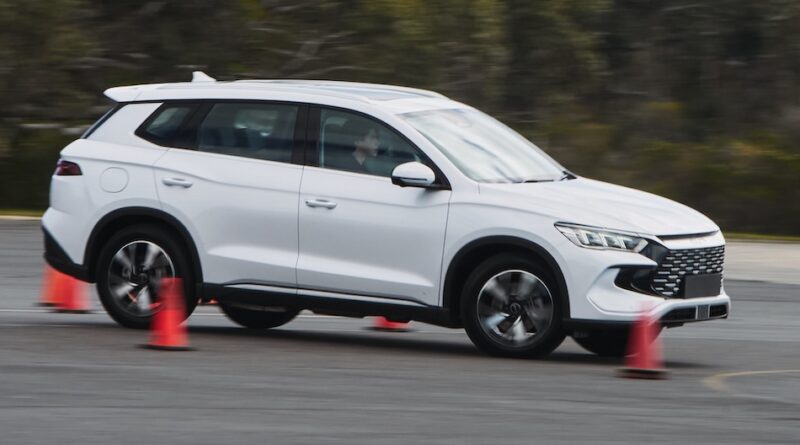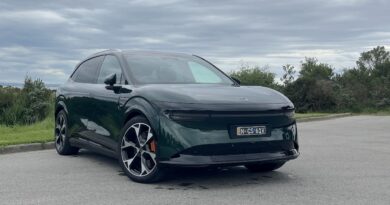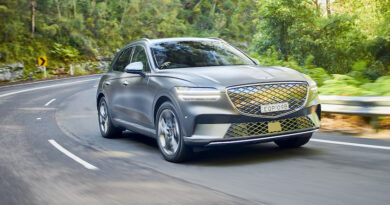2026 BYD Sealion 5 Premium Review: This PHEV SUV is the Mitsubishi Lancer wagon of its generation. That’s a compliment, by the way…
The latest model in BYD’s Aussie model rush is the Sealion 5 plug-in hybrid compact SUV.
As much aimed at fleets as it is private buyers, the Sealion 5 is going to major on that usual BYD attribute – value for money.
It will undercut the BYD Sealion 6 on price when it arrives in early 2026, which means dipping below $40,000 – and probably well below.
That means it will become Australia’s cheapest plug-in hybrid SUV, which makes sense given BYD’s recent price hacking with the electric Atto 1 and Atto 2.
We recently had the chance to have a brief drive and inspection of the BYD Sealion 5, so let’s check it out.
READ MORE: 2026 BYD Atto 2 Dynamic Review: Cheap and surprisingly cheerful compact electric SUV makes ICE rivals redundant
READ MORE: BYD Atto 1 price and specification: Chinese city EV confirmed as Australia’s cheapest electric car
READ MORE: 2025 BYD Sealion 8 Premium Review: It’s super-fast and handles like a sports car. Does a seven-seat family SUV really need to behave this way?
2026 BYD Sealion 5 Premium: Price and equipment
We’ve already discussed price, but we can also tell you there are two models in the BYD Sealion 5 range, the entry-level Essential and the top-spec Premium, which is the one we had a chance to sample.
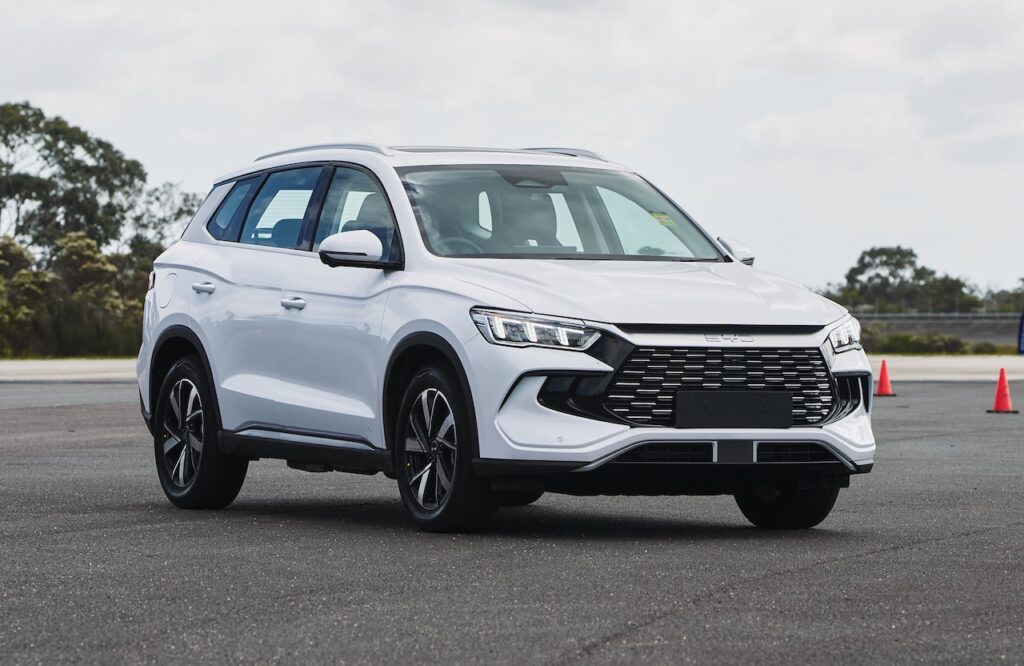
Both Sealion 5s are five-seat, five-door wagons that measure in at 4738mm long with a 2712mm wheelbase. It’s only 37mm shorter than the Sealion 6. Sizable, in other words.
Where the two Sealion 5 models differ is in their fourth generation BYD DM-I Super Hybrid powertrains. The Essential gets a 12.9kWh battery pack and the Premium gets 18.3kWh (both LFP).
When combined with the front-mounted 1.5-litre petrol engine and e-motor (156kW together), that equates to a 71km range for the Essential and 100km for the Premium (measured from 100 per cent battery to 25 per cent when the engine will kick in), based on the looser NEDC test regime.
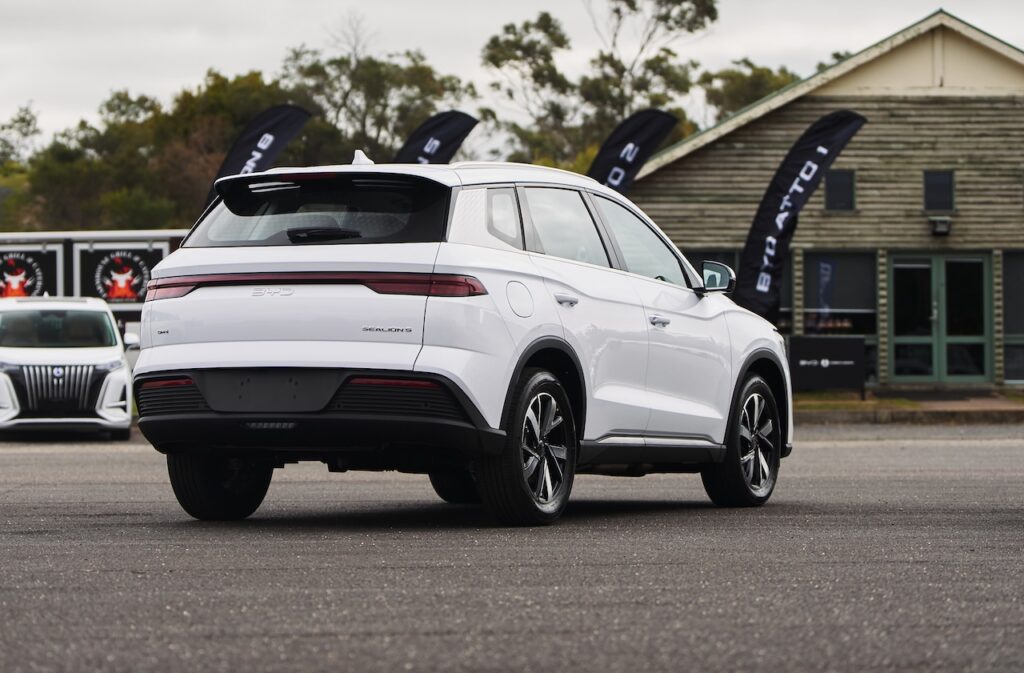
With a 52-litre petrol tank, the claimed combined range is beyond 1000km for the Premium. Highly theoretical claimed fuel consumption is 1.3L/100km for the Premium and 1.2L/100km for the Essential. Pinch of salt material that.
Standard shared equipment includes an 8.8-inch digital instrument cluster, a 10.1-inch (Essential) or 12.8-inch infotainment touchscreen that includes wireless Apple CarPlay and Android Auto, dual-zone climate control and V2L external charging.
Features confirmed for the Premium include a comprehensive 360-degree camera with transparent view, nine-speaker audio, power adjustable front seats and a wireless phone charger.

It can be locked/unlocked and started remotely via the BYD app.
Safety equipment includes seven airbags and the usual swag of BYD driver assist systems such as autonomous emergency braking, rear cross-traffic brake, adaptive cruise control, lane keeping and blind-spot warning. There are front and rear parking sensors.
2026 BYD Sealion 5 Premium: What we think
This is gonna date me but I’ll say it anyway. The 2026 BYD Sealion 5 reminds a lot of a 1996 Mitsubishi Lancer wagon.
The Lancer was basic and a bit humdrum but affordable and spacious for the money.
It was a bit of a fleet favourite because of it.
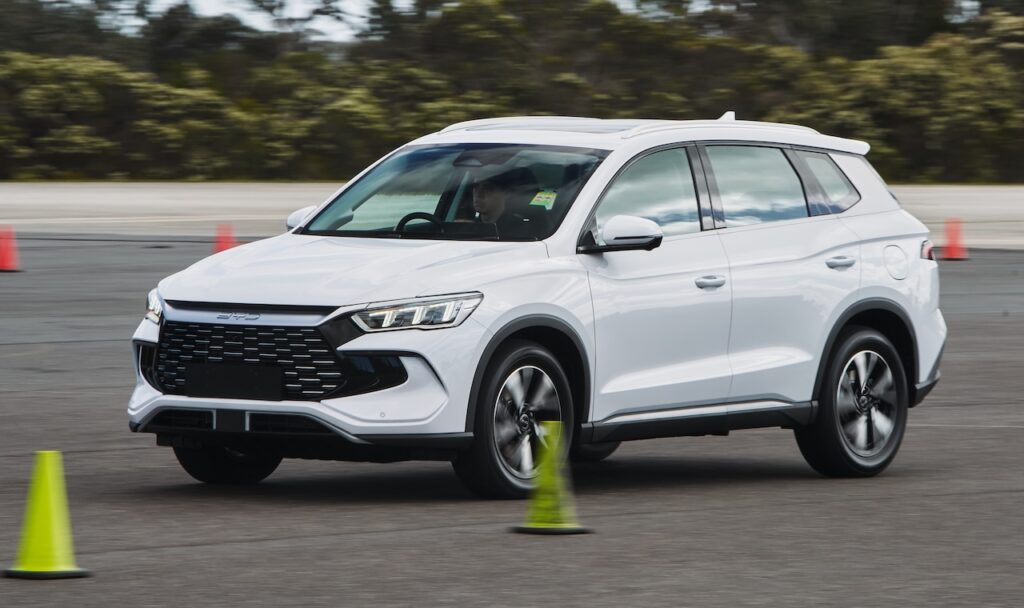
See where I’m coming from here? The Sealion 5 has the same sort of vibe to it. Nothing fancy or exotic, just honest motoring.
Don’t get me wrong, they don’t drive the same way. We’ve come a fair way in 30 years. The Lancer was a pretty asthmatic thing, whereas the Sealion 5 has plenty of EV punch backed up by ICE power that drives the wheels directly above about 70km/h, as well as recharge the battery.
It’s not a struggler at all when it comes to acceleration. Driven via an e-CVT, there’s no way to select faux manual gear steps.

Claimed consumption showing on the trip computer after a solid day on the track was 4.9L/100km and 11.9kWh/100km. That’s gonna appeal to fleets for sure. Families won’t mind either.
The Premium’s combination of MacPherson strut front- and multi-link rear-suspension rolling on 18-inch alloy wheels and tyres feels pretty darned solid and comfy.
Admittedly our drive was brief and at a proving ground, but there’s decent body control and the handling is not sloppy. The electric-assist steering is nimble, offers some feel and can be tuned through different modes.
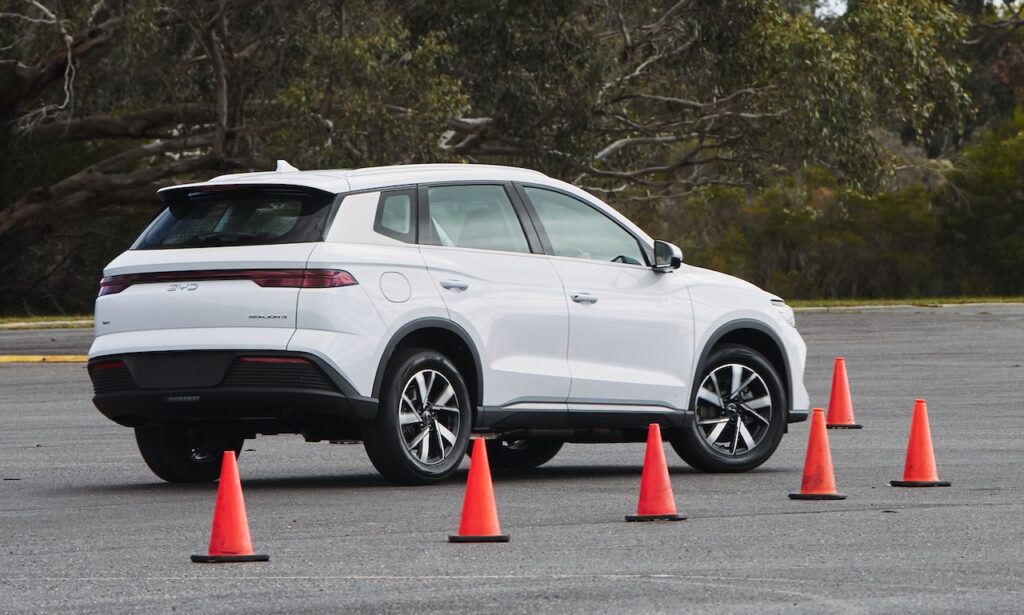
There is some tyre noise, and the regenerative braking did not feel that strong. For some reason our car had hill descent control, but this is no off-roader.
The adaptive cruise control adjusts speed on curves. It’s far too conservative and can be switched off. Don’t hesitate. There is also a drop-down menu on the screen that allows various functions to be tuned.
Inside, the Sealion 5 is typical BYD minimalist without being Tesla-spartan. There’s a bit of Atto 3 marine theme without submerging entirely.

The flat-bottom steering wheel, flat single-piece front seats, synthetic leather trim, screen-centric controls and panoramic sunroof are all BYD signatures. One thing the Sealion 5 and other future BYDs don’t have is the rotating screen party trick. It’s now set on landscape to better integrate with phone apps.
There’s plenty of space in the rear seat, although there is a bit of ridge where you rest your feet – maybe that’s battery pack-related. There are bins, USBs and a-c vents back there, too.
An adequate 463 litres is claimed for the boot, expanding to 1410 litres when you split-fold the rear seat. It’s accessed via a power tailgate. There’s no spare tyre under the floor sadly.

2026 BYD Sealion 5 Premium: Verdict
Not every BYD model is going to be a star like the Shark 6 ute. Some are going to be background players. The Sealion 5 is one of those.
It’s an affordable worker bee destined to be pressed into a working life for families and businesses.
The Lancer wagon of its generation? There are worse things to be.
SCORE: 3.5/5
SCORE: 3.5/5
2026 BYD Sealion 5 Premium: specifications
Price: $38,000 plus on-road costs (guesstimate)
Basics: PHEV, 5 seats, 5 doors, SUV, FWD
Range: 100km EV only (NEDC)
Battery capacity: 18.3kWh LFP
Battery warranty: Eight-years/160,000km (we think)
Fuel consumption: 1.3L/100Km Combined (ADR)
Powertrain: 1.5-litre four-cylinder petrol, 72kW/122Nm
Motors: 1 front, 145kW/300Nm
Combined output: 156kW
AC charging: 11kW, Type 2 plug (China domestic claim)
DC charging: 110kW, CCS plug (China domestic claim)
0-100km/h: 8.1 secs (claim)

